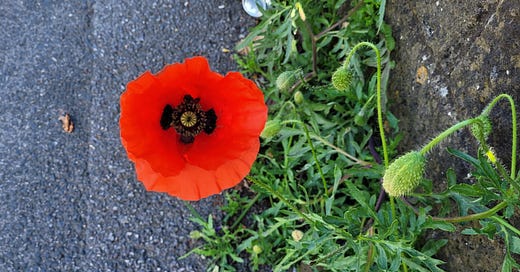You’re reading the paid-for edition of The Ink - curated community news straight to your inbox in association with Swindon Link. Having upgraded to paid, you are supporting the most exciting and ambitious media venture in the South West enabling us to keep you informed and up to date with everything Swindon. By subscribing you have given us the ability to send news analysis, updates and features direct to your inbox. We always welcome feedback so please let us know how we are doing in the comments. And please tell your friends and families about us as every new subscriber makes us stronger.
If you are a free subscriber you will only be able to read the first part of this briefing which means you’ll miss out on the entire article.
Upgrade now and get your first month free. The ultimate try before you buy.
It only costs £5.99 a month - less than one Crème Brulée Iced Brown Sugar Oat Shaken Espresso at Starbucks a month - and you'll be supporting independent quality journalism in Swindon.
The Barrie Hudson Column
Barrie Hudson is a known quantity when it comes to writing words. Sometimes he even spells them correctly. In fact he has been writing words in the Swindon area for more than two decades. First of all for the Swindon Advertiser and then for Swindon Link and now for The Ink. Here are some of his words…
Who needs expensive compost and fertiliser when plants clearly prefer a random patch of tarmac with a crack in it?
I’ve come up with a revolutionary new gardening technique, one which will bring superb results and is well within the capabilities of even the most hesitant or unskilled amateur.
My conclusions are based on extensive study of my own front and back gardens, followed by an extensive study of an assortments of pavements, gutters, random patches of waste ground and so on. My observations were as follows:
The common flowers deliberately grown by me, including hollyhocks, foxgloves and so on, emerge from the ground with all the vigor and zest for life of a consumptive Victorian poet weakly weeping on a chaise longue for a lost love and sippling absinthe.
The common flowers found coming out of random cracks in the pavement, emerging from behind a small stack of fast food cartons in an alley and so on, are all so vigorous, enormous and gorgeous that you can’t look at them without contemplating the sheer beauty at the heart of the universe and wondering where you can lay your hands on the complete works of Richard Jefferies.
The fruit and vegetable plants deliberately grown by me, including tomatoes, carrots, raspberries and so on, wither like Count Dracula on a sunbed if one so much as looks at them suddenly or suffers a discreet attack of wind in their vicinity.
The fruit and vegetable plants found coming out of random cracks in the pavement, emerging from behind a small stack of fast food cartons in an alley and so on, are so vigorous - even after being pecked at by massive flocks of birds, mauled by Biblical plagues of caterpillars and used by every dog in the neighbourhood as a public convenience - that the ground for several square yards around them looks like the stockroom of an old-fashioned greengrocer’s shop.
I always wanted to be one of those gardening journalists.
You know the type I mean. The ones who have columns in newspapers and magazines, full of horticultural wisdom and bits of mysterious lore, and who write knowledgable things like: “Now that we’ve reached the third week in February it’s time to sparge your leek beds with whelk juice - and don’t forget to flense last year’s parsnips in time for the Feast of St Matthias. It’s a bit of a labour but they’ll thank you come Swan Upping in July.”




